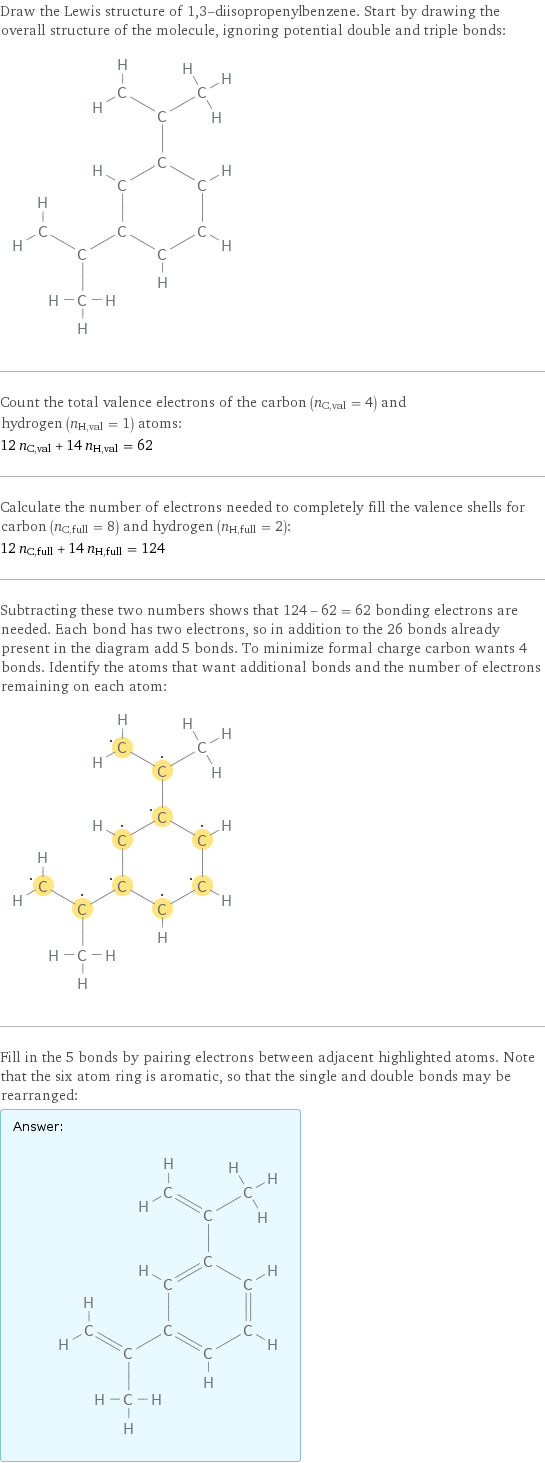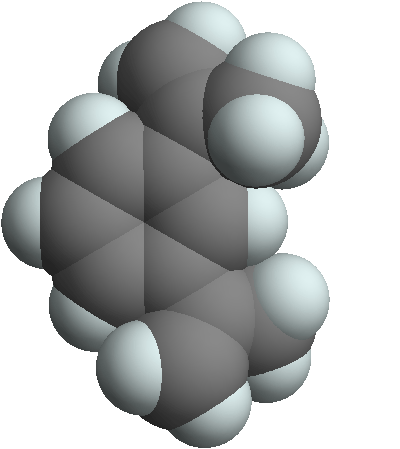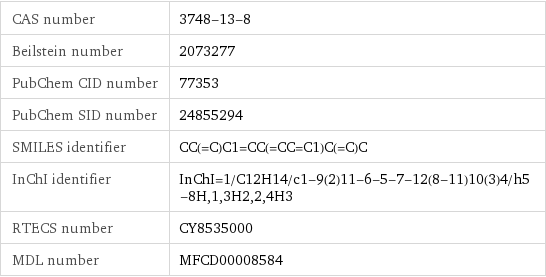Input interpretation

1, 3-diisopropenylbenzene
Chemical names and formulas
![formula | C_6H_4[C(CH_3)=CH_2]_2 Hill formula | C_12H_14 name | 1, 3-diisopropenylbenzene alternate names | 1, 3-di(prop-1-en-2-yl)benzene mass fractions | C (carbon) 91.1% | H (hydrogen) 8.92%](../image_source/7d965197be2eace0eb45de214ecb7a4e.png)
formula | C_6H_4[C(CH_3)=CH_2]_2 Hill formula | C_12H_14 name | 1, 3-diisopropenylbenzene alternate names | 1, 3-di(prop-1-en-2-yl)benzene mass fractions | C (carbon) 91.1% | H (hydrogen) 8.92%
Lewis structure

Draw the Lewis structure of 1, 3-diisopropenylbenzene. Start by drawing the overall structure of the molecule, ignoring potential double and triple bonds: Count the total valence electrons of the carbon (n_C, val = 4) and hydrogen (n_H, val = 1) atoms: 12 n_C, val + 14 n_H, val = 62 Calculate the number of electrons needed to completely fill the valence shells for carbon (n_C, full = 8) and hydrogen (n_H, full = 2): 12 n_C, full + 14 n_H, full = 124 Subtracting these two numbers shows that 124 - 62 = 62 bonding electrons are needed. Each bond has two electrons, so in addition to the 26 bonds already present in the diagram add 5 bonds. To minimize formal charge carbon wants 4 bonds. Identify the atoms that want additional bonds and the number of electrons remaining on each atom: Fill in the 5 bonds by pairing electrons between adjacent highlighted atoms. Note that the six atom ring is aromatic, so that the single and double bonds may be rearranged: Answer: | |
3D structure

3D structure
Basic properties

molar mass | 158.24 g/mol phase | liquid (at STP) boiling point | 231 °C density | 0.925 g/cm^3
Units

Liquid properties (at STP)

density | 0.925 g/cm^3 refractive index | 1.556
Units

Chemical identifiers

CAS number | 3748-13-8 Beilstein number | 2073277 PubChem CID number | 77353 PubChem SID number | 24855294 SMILES identifier | CC(=C)C1=CC(=CC=C1)C(=C)C InChI identifier | InChI=1/C12H14/c1-9(2)11-6-5-7-12(8-11)10(3)4/h5-8H, 1, 3H2, 2, 4H3 RTECS number | CY8535000 MDL number | MFCD00008584
Safety properties

flash point | 91.11 °C